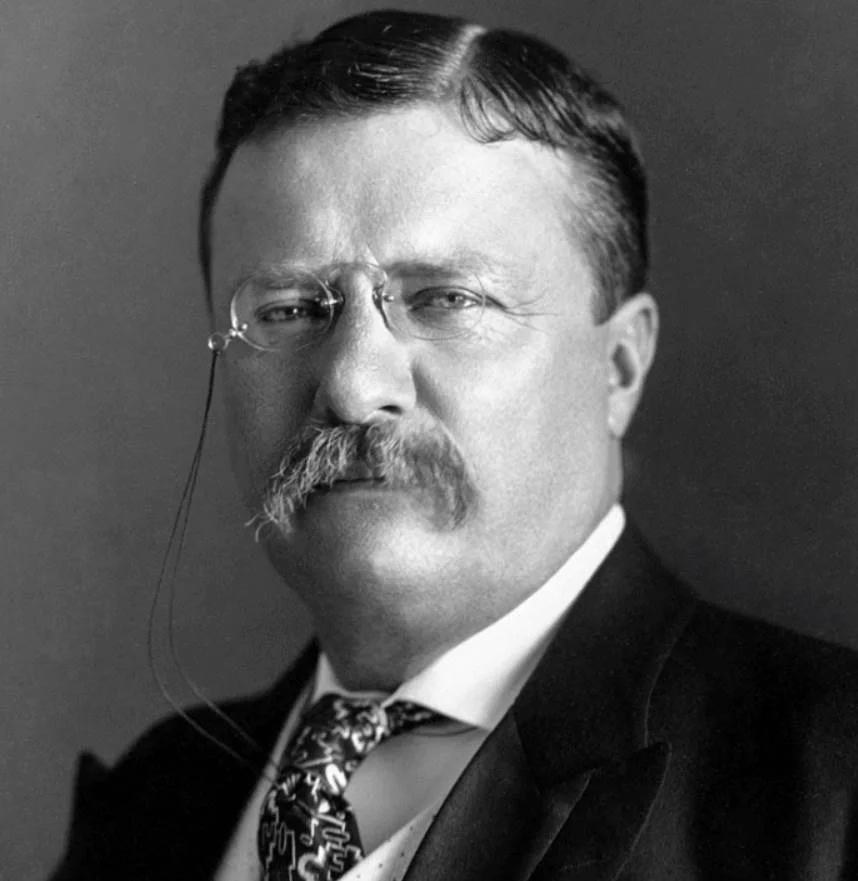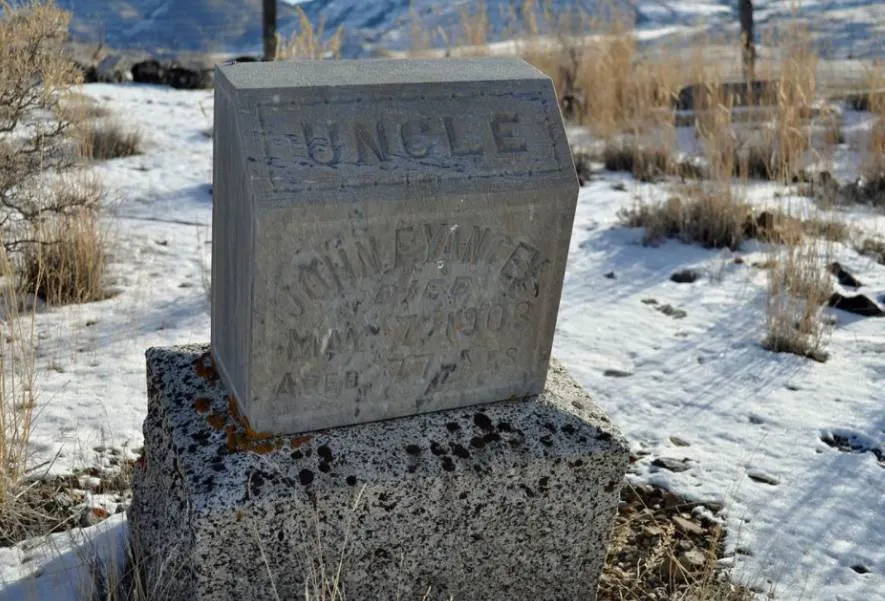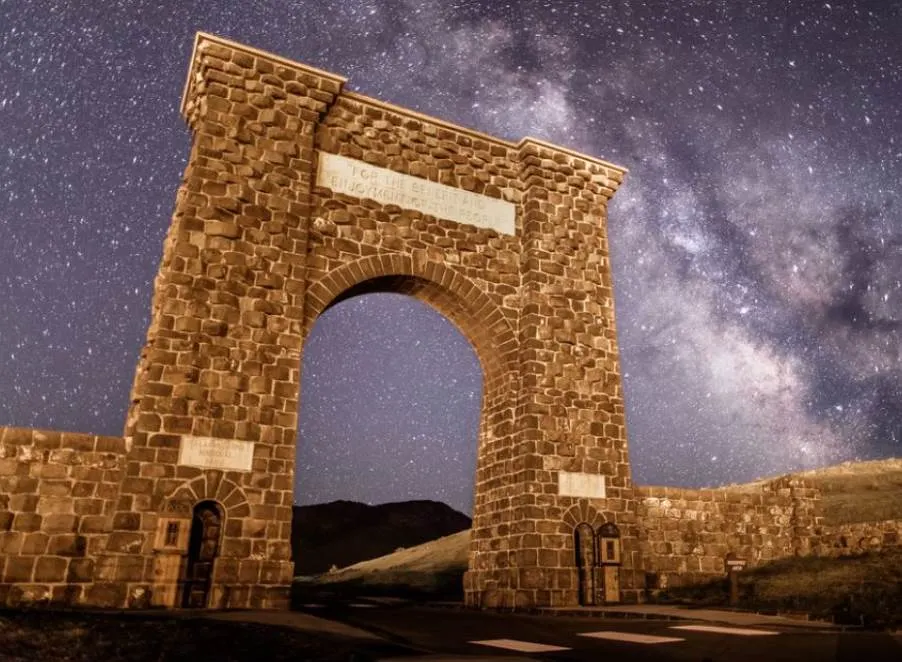Triumphal arches have been built all around the world for a wide variety of purposes.
In Ancient Rome they were a prominent part of triumphal processions. Arches built more recently mostly serve their purpose as monumental landmarks in cities.
In this post, we’ll take a closer look at some interesting Roosevelt Arch facts, a famous triumphal arch located in the U.S. state of Montana that has quite a different purpose!
1. It serves as the entrance of a famous U.S. National Park
Instead of being a monumental arch in a bustling city, this particular arch serves as the northern entrance of one of the most amazing pieces of nature in the world, the Yellowstone National Park.
It’s located in the rural town of Gardiner, Montana, in the northwest of the United States. The park itself extends into Wyoming and Idaho and covers a total area of 2,219,791 acres (8,983.18 square kilometers).
The park was founded on March 1, 1872, and is one of the most popular tourist attractions in the United States. The arch was built over 30 years later in 1903.

2. It was named after the man who laid the cornerstone
While President Ulysses S. Grant signed the bill to establish the National Park in the 1870s, it was President Theodore Roosevelt who laid the cornerstone of the arch on April 24, 1903.
That’s why the arch was named after the 26th president of the United States who was in office between 1901 and 1909.
Remarkably, President Roosevelt placing the cornerstone wasn’t a scheduled event. He happened to be in the area during construction, which had started two months earlier, accepted the offer, and the arch was named after him.

3. A time capsule was integrated into the cornerstone with various items

One of the most remarkable Roosevelt arch facts is that the cornerstone laid by President Roosevelt was accompanied by a time capsule that contains various items.
Some of these items are a Bible, a picture of Roosevelt, and multiple local newspapers. Whether or not these will be dug any time soon remains an open question.
4. The popular inauguration didn’t end well for one man
The arch was completed on August 15, 1903, and the inauguration of the arch was a huge event in the region. It attracted thousands of people to Gardiner, including John F. Yancey, also known as “Uncle John Yancey.”
He was the owner and operator of the “Yancey Pleasant Valley Hotel,” which he built to accommodate travelers to the mining camps in the area.
Unfortunately for Yancey, visiting the dedication of the arch with president Roosevelt wasn’t a good idea because he caught a cold and subsequently died just a few weeks later on May 7, 1903.

5. It’s not as big as most of the other famous arches in the world
The idea to build an arch in this location came about when the Gardiner railway station was being built. The original idea was to build an arch that would serve as part of this building.
The main reason it was built, however, was to serve as the monumental entrance to the magnificent Yellowstone National Park. The arch stands just 52 feet (16 meters) tall, which is much smaller than some of the most famous arches in the world, the Arc de Triomphe in Paris, which is 50 meters (164 feet) high. It is, however, taller than the Arch of Titus in Rome which stands just 15.4 meters (50 feet) tall.
That being said, there isn’t any building located in its immediate vicinity, something that makes it appear much taller than it is.
6. Building the arch wasn’t exactly cheap
Even though constructing the arch with rusticated hexagonal blocks of columnar basalt quarried in the area only took less than 6 months between February 19, 1903, and August 15, 1903, building it wasn’t exactly cheap.
The total cost to build the arch was about USD 10,000, the equivalent of nearly USD 300,000 today!

7. A quote from the Organic Act of 1872 is inscribed on it
If you look closely above the archway you can see a quote being inscribed into it. This quote reads “For The Benefit And Enjoyment Of The People.”
This quote was taken literally from the organic act signed in 1872 which established the Yellowstone National Park.

8. The arch features two wooden doors and is flanked by walls
The structure itself consists of 2 towers that have itself wooden doors which allow people to pass through. Just above the doors, there are two additional quotes. The left one reads “Yellowstone National Park” and the right one reads “Created by Act of Congress, March 1, 1872.”
The entire structure is flanked by two walls as well which were built with the same materials and with the same design. These walls stand just 12 feet (3.7 meters) tall.

9. It once featured a landscaped garden which is now gone
The original plan for the arch was much more grandiose than it eventually turned out to be. The ultimate goal was to flank the arch with a huge waterfall and small lake, but because the region hardly sees any rain, this plan was deemed impossible and quickly shelved.
They did, however, build a small pond near the arch and a landscaped garden that included sequoias from California. The pond dried up and there’s hardly any trace of it anymore today.
10. The arch has been listed on the National Register of Historic Places
Roosevelt Arch is one of the most prominent landmarks on the North Entrance Road Historic District, the first major road that was built in the Yellowstone National Park.
Because it’s such a remarkable landmark and serves as the monumental entrance to a National Park that is visited by over 4 million people every year, it has also been listed on the National Register of Historic Places in 2002.

